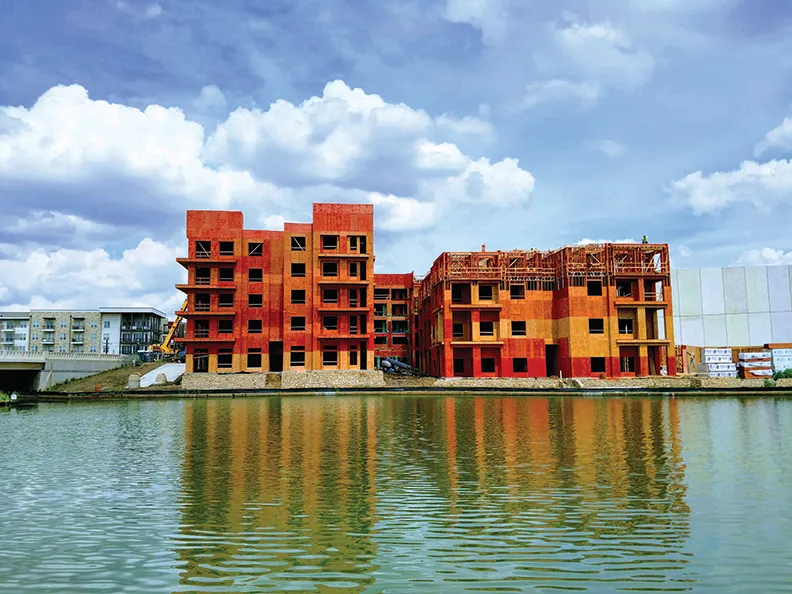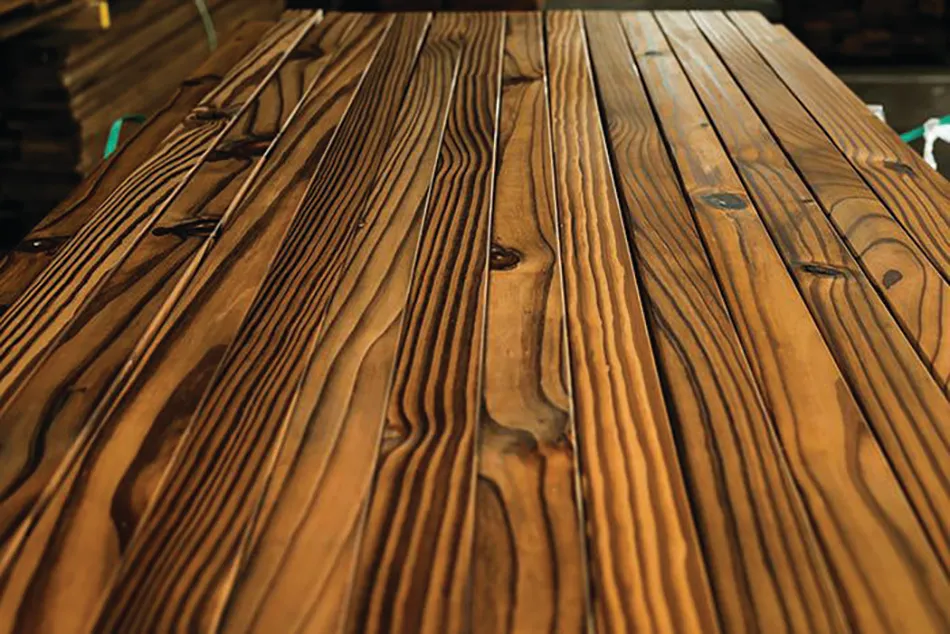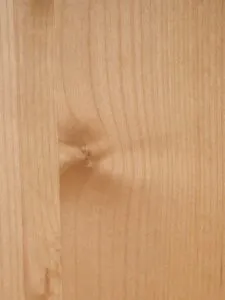Table of Contents
Record wildfires in the West have spurred increased interest in protecting structures against fire. Many believe the solution is to apply something to the wood in a structure to keep it from burning. The reality of effectively protecting wood against fire, however, is far more complicated.
There are a host of coating products promoted today to safeguard wood from fire. Yet there are significant differences when compared to wood that has been pressure treated with fire retardants.
These differences are recognized in the International Building Code, Section 2303.2, which defines fire-retardant-treated wood (FRTW) as “wood products impregnated with chemicals by a pressure process.” If not applied through pressure, the treatment “shall be an integral part of the manufacturing process of the wood product.” The 2018 edition of the IBC further clarifies what is allowed in Section 2303.2.2: “The use of paints, coating, stains or other surface treatments is not an approved method of protection as required in this section.”
Pressure treating infuses the fire retardant into the cells of the wood, not just the surface. The combination of pressure and fire-retardant treatments change the chemistry of the wood, so when it is heated, it gives off water and carbon dioxide which slows or stops the spread of flames.
Infused fire retardants dilute the flammable gases that are created when wood is heated and encourage charring, which insulates the wood below and slows fire growth. Since it is in the wood cells, the fire retardant is not damaged during or after construction. This long-lasting durability is unmatched compared to coatings.
By comparison, fire-retardant coatings only cover the surface of the wood. Many claim to “adhere” to the wood, however they may fail over time to react in the same way as infused retardants.
Wood is a hygroscopic material, meaning it takes in and releases moisture based on the environment where it is used. As such, wood will shrink or swell over time. These changes create cracks or gaps in surface coatings, creating pathways for fire to impact the wood.
Coatings also can be damaged from moisture, handling and installation. The impact from tools such as hammers, power nailers, and saws on coated wood could create breaks in the coating, both at the point of impact and beyond where force was applied. Pressure-treated retardants, by comparison, are much more durable, since they are in the wood fiber.
Fire retardants used in pressure treating are typically colorless and don’t change the appearance of the wood. Since the FRTW looks much like untreated wood, the only indication of treatment is the required quality label on the wood.
Some wood treaters may use light color tints, or place markings such as a colored line on the narrow edge of the wood to help laborers identify FRTW products. These colors and markings also are helpful for building code inspectors to identify fire-retardant wood that has been cut or trimmed and there is no label on the piece.
However, color should not be considered the only indicator the wood has been pressure treated with fire retardants. Some wood promoted as having fire-retardant qualities may appear with pink, green and blue tints. Yet they lack the code-mandated label and fail to meet the building code requirements.
It’s important to note that no treatment, whether through pressure treatment or coating, will make wood “fireproof.” When exposed to flame and heat for extended time, all wood will burn. Even non-combustible materials such as steel and concrete eventually succumb to the ravages of fire over time.
There are no simple solutions to protecting structures against fire. Utilizing fire-retardant-treated wood can help, but the power of many wildfires today may make it impossible to achieve the level of protection we want.









